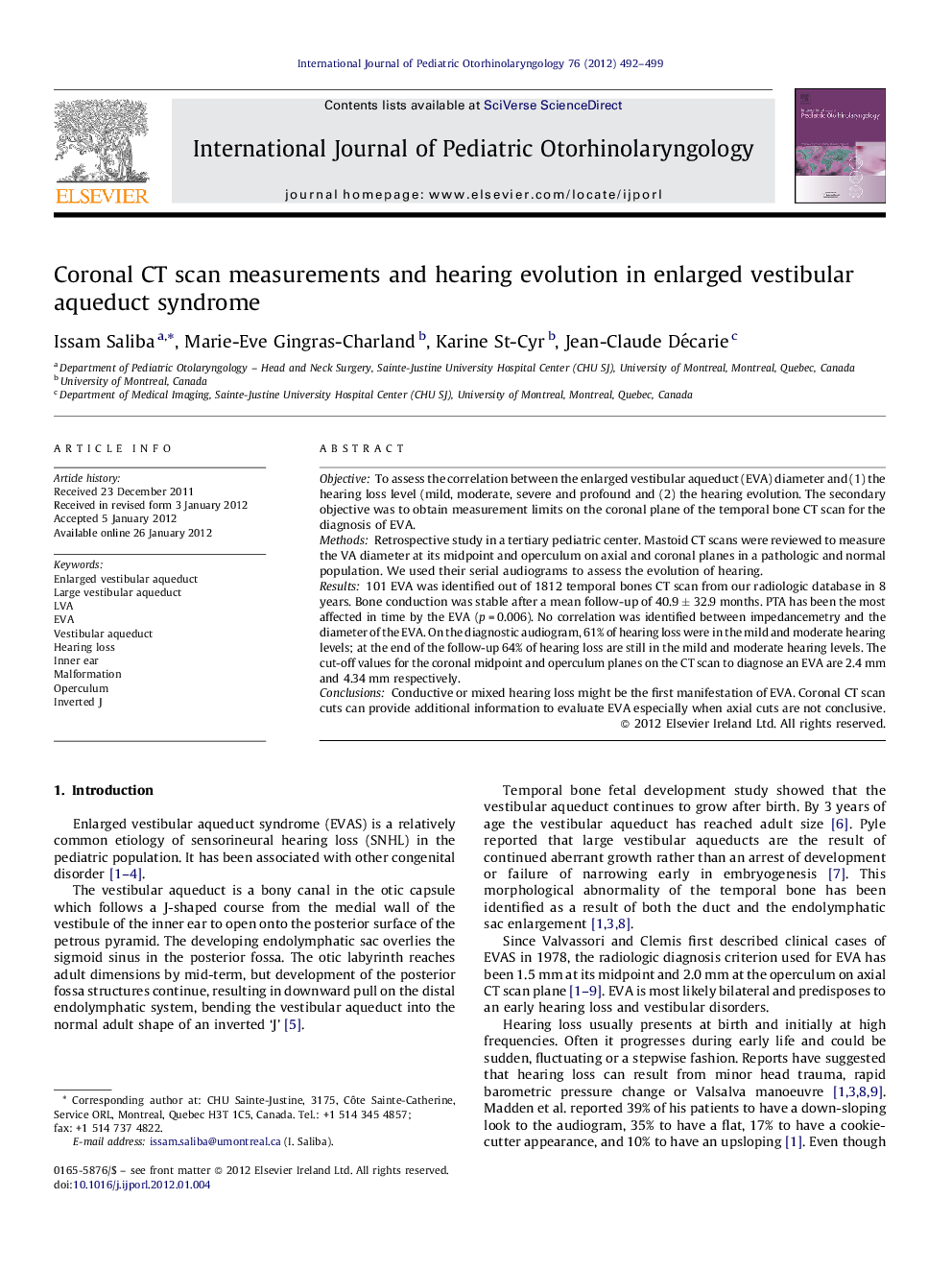| Article ID | Journal | Published Year | Pages | File Type |
|---|---|---|---|---|
| 4112967 | International Journal of Pediatric Otorhinolaryngology | 2012 | 8 Pages |
ObjectiveTo assess the correlation between the enlarged vestibular aqueduct (EVA) diameter and (1) the hearing loss level (mild, moderate, severe and profound and (2) the hearing evolution. The secondary objective was to obtain measurement limits on the coronal plane of the temporal bone CT scan for the diagnosis of EVA.MethodsRetrospective study in a tertiary pediatric center. Mastoid CT scans were reviewed to measure the VA diameter at its midpoint and operculum on axial and coronal planes in a pathologic and normal population. We used their serial audiograms to assess the evolution of hearing.Results101 EVA was identified out of 1812 temporal bones CT scan from our radiologic database in 8 years. Bone conduction was stable after a mean follow-up of 40.9 ± 32.9 months. PTA has been the most affected in time by the EVA (p = 0.006). No correlation was identified between impedancemetry and the diameter of the EVA. On the diagnostic audiogram, 61% of hearing loss were in the mild and moderate hearing levels; at the end of the follow-up 64% of hearing loss are still in the mild and moderate hearing levels. The cut-off values for the coronal midpoint and operculum planes on the CT scan to diagnose an EVA are 2.4 mm and 4.34 mm respectively.ConclusionsConductive or mixed hearing loss might be the first manifestation of EVA. Coronal CT scan cuts can provide additional information to evaluate EVA especially when axial cuts are not conclusive.
